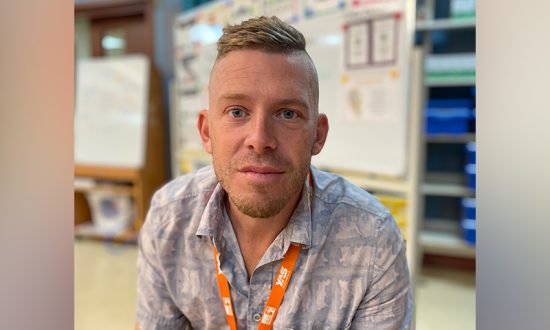Mark Ryan is an international educator from Canada. He has been teaching internationally since 2005, working both in Hong Kong and the United Arab Emirates. Mr. Mark has worked with students and teachers both inside and outside the classroom, partnering with groups such as the Louvre Abu Dhabi, Guggenheim Abu Dhabi, and Hong Kong Television Company. During 2010 and 2015, Mr. Mark hosted a television programme for students in Hong Kong. However, for the past eight years, he has led the Specialist programme at Raha International School in Abu Dhabi, UAE.
STEM or STEAM education is designed to encourage discussion and critical thinking through practical lesson opportunities around Science, Technology, Engineering, Arts and Maths skills. However, developing an authentic learning environment and curriculum to support the above skills is the tricky part. In this short reflection, I will attempt to outline some of the best practices in STEAM education as seen at Raha International School, UAE.
Discussing STEAM education can be complicated with many moving parts (pardon the pun). However, I often like to breakdown the space into three main components: TEAM, SPACE and COLLABORATION (TSC). If an educator(s) is able to truly reflect and develop these components, their learning environment and STEAM lessons will improve and ultimately support more learners.
When developing the STEAM Innovation Hub in 2021 for Raha International School in Abu Dhabi, Michael Sheehan and I focused on the TSC components to create a dynamic and innovative learning environment for students, parents and teachers. The process took over a year and involved many stakeholders. In the end, we were able to seamlessly create a STEAM space that felt part of the school culture and ethos. We started the process, by looking at the importance of TEAM and STEAM.
TEAM
For any initiative to gain momentum, it needs to be powered by an authentic voice(s) and direction. When developing an effective team, you need to outline the focus of your STEAM program and the gaps the program will fill within your current educational landscape. At Raha, we were able to use data from both internal and external testing to highlight areas of improvement for our students (Science and Maths) while also supporting areas of strength and well-being (The Arts). Once you can highlight your key areas, you can find educators that will support their development. Coming from an Arts background, I took the lead with unpacking the skills that would be most transferable in the space. However, the real success in building the team was through the conversations with the Head of Technology Integration (Primary), Mr Michael Sheehan. The combination of these two unique teaching styles (Arts and Technology) provided an innovative approach to planning and lesson development.
SPACE
Ideally, a STEAM learning environment needs to be large and flexible (tables, seating) space. There needs to be areas of the space that allow for hands-on learning opportunities. These learning opportunities are best when they relate to learning objectives happening in their homeroom classes (UOI). The space needs to be large enough for students to freely move around during the Engineering Cycle (Ask, Research, Plan, Create, Test, Improve) at their own pace (readiness and interest). Materials and equipment in the space should be safe and assessable to all students. However, strong agreements (“rules”) can be created at the beginning of the year (essential agreements) between students and teachers to ensure that everyone is able to use the space in an effective manner:
- Be a risk taker
- Share roles and responsibilities
- Tidy up workstation before moving to a new task
- Handle tools and materials safely
- Make informed choice (groupings and materials)
COLLABORATION
The STEAM space provides opportunities for students to make real life connections while strengthening the learning developed by their homeroom teachers. For the students to make the most of these opportunities, the learning needs to be hands-on and practical. The Science and Maths outcomes taught during these lessons should present themselves when there is an authentic learning experience. For example, while teaching students about building rafts, the STEAM educators should highlight the concept such as buoyancy when the students are about to physically test their creations (rafts). This is so because application of knowledge develops understanding.
STEAM educators and homeroom teachers (with support from curriculum coordinators) need to sit down on a regular basis and map out their units. The plan should have three parts:
- Long Term (big ideas)
- Six Week (five to nine learning objectives shared by teachers and STEAM educators)
- Focus on ATLs (Approaches to Learning)
If the learning objective are then shared with the students at the beginning of each lesson, then both teachers and students can make an accurate assessment of their progress.




